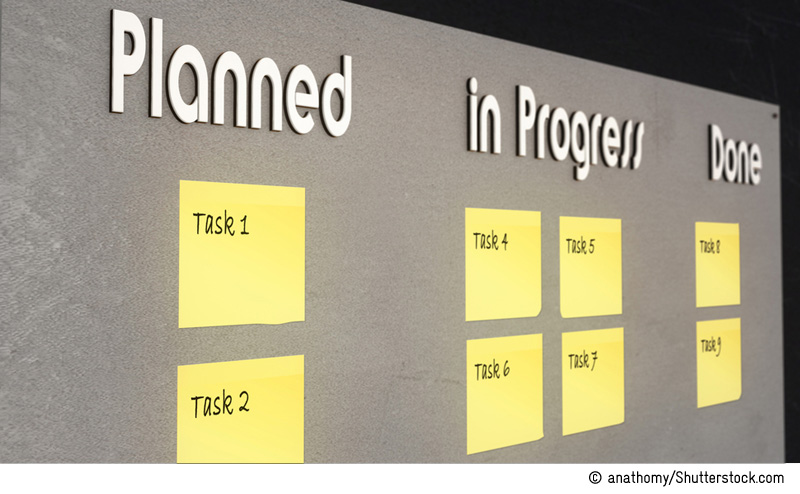Agile methods

Originally used in IT, agile methods of process management offer a degree of transparency that can also be used in international cooperation.
The distinguishing feature of agile digital development is that users themselves are involved in the development process. The advantages: fast, transparent and unbureaucratic results that satisfy user needs.
Agile methods may have been developed for open-ended processes, but they are also suited to programmes and projects in the field of technical and financial cooperation. They lend themselves particularly well to the participatory components of international cooperation projects. The following approaches show promise in this regard:
Co-creation
Co-creation brings together various parties, with the aim of jointly achieving a good outcome for all. The target group is involved in the development phase. Dialogue, joint discovery and feedback result in a product that meets user requirements.
Design thinking (DT)
The DT approach stems from architecture. DT combines creative thinking processes and design work flows with technological and business methods. DT aims to enable new forms of cooperation and focuses on user needs. Problems are analysed jointly and intensively, and solutions identified. Prototypes enable these solutions to be visualised at an early stage in the work process. The method is ideal for managing transformation processes in international cooperation.
Scrum
ʻScrum’ is a term used in rugby to refer to an organised formation of players. In team work, scrum is used to describe a process framework. It was used originally to develop and update complex IT projects. The agile and transparent process management method is based on the assumption that IT projects are often too complex to plan extensively from the outset; unforeseeable developments are therefore accepted. The work process is divided into events (development, sprint, review meetings) and artifacts (protocol//minutes, task lists). Results are reviewed, questioned and improved on a continuous basis. A scrum team has three to nine members, with every team member performing a clearly defined role.